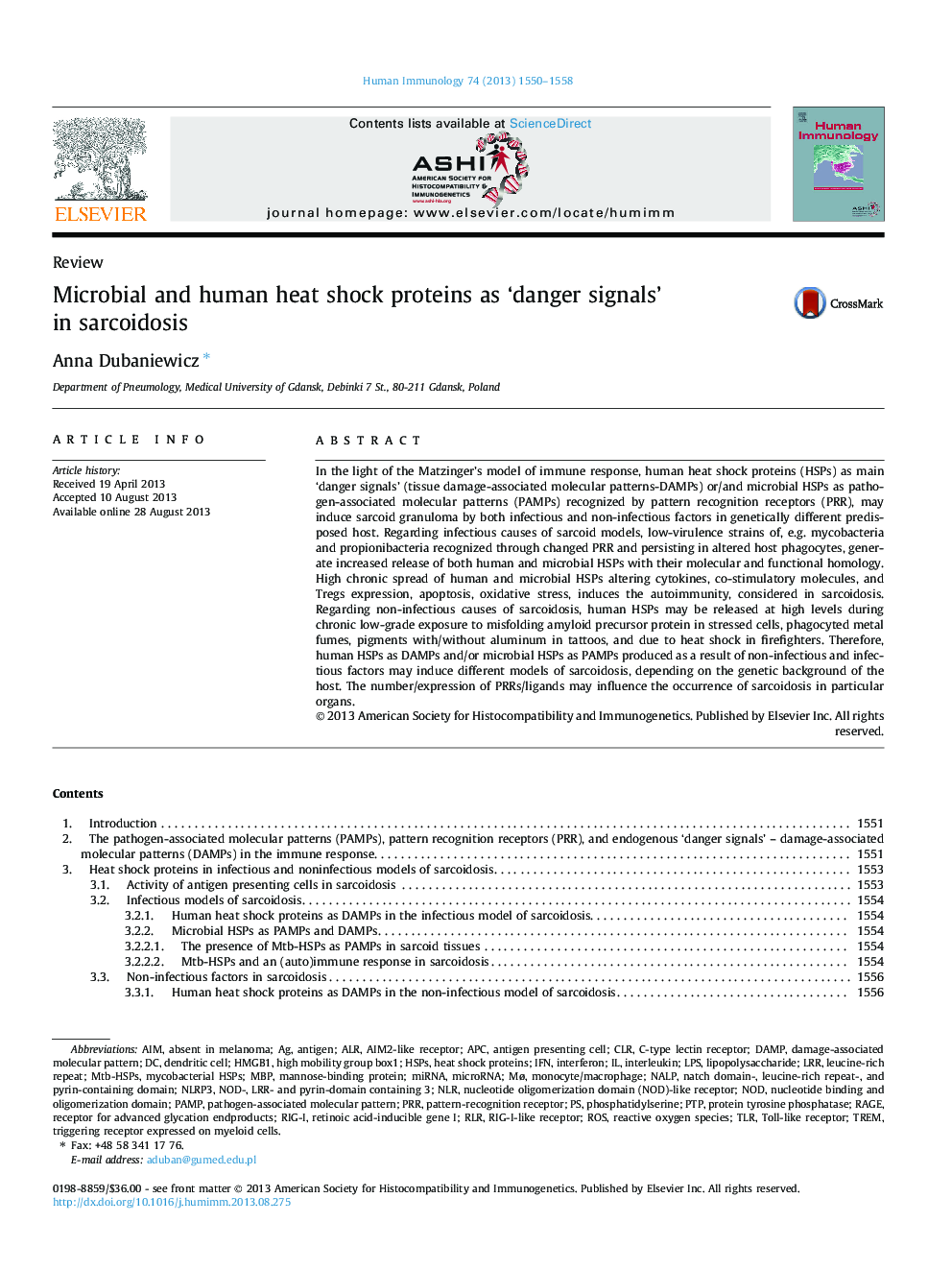| کد مقاله | کد نشریه | سال انتشار | مقاله انگلیسی | نسخه تمام متن |
|---|---|---|---|---|
| 3350741 | 1216405 | 2013 | 9 صفحه PDF | دانلود رایگان |

In the light of the Matzinger’s model of immune response, human heat shock proteins (HSPs) as main ‘danger signals’ (tissue damage-associated molecular patterns-DAMPs) or/and microbial HSPs as pathogen-associated molecular patterns (PAMPs) recognized by pattern recognition receptors (PRR), may induce sarcoid granuloma by both infectious and non-infectious factors in genetically different predisposed host. Regarding infectious causes of sarcoid models, low-virulence strains of, e.g. mycobacteria and propionibacteria recognized through changed PRR and persisting in altered host phagocytes, generate increased release of both human and microbial HSPs with their molecular and functional homology. High chronic spread of human and microbial HSPs altering cytokines, co-stimulatory molecules, and Tregs expression, apoptosis, oxidative stress, induces the autoimmunity, considered in sarcoidosis. Regarding non-infectious causes of sarcoidosis, human HSPs may be released at high levels during chronic low-grade exposure to misfolding amyloid precursor protein in stressed cells, phagocyted metal fumes, pigments with/without aluminum in tattoos, and due to heat shock in firefighters. Therefore, human HSPs as DAMPs and/or microbial HSPs as PAMPs produced as a result of non-infectious and infectious factors may induce different models of sarcoidosis, depending on the genetic background of the host. The number/expression of PRRs/ligands may influence the occurrence of sarcoidosis in particular organs.
Journal: Human Immunology - Volume 74, Issue 12, December 2013, Pages 1550–1558